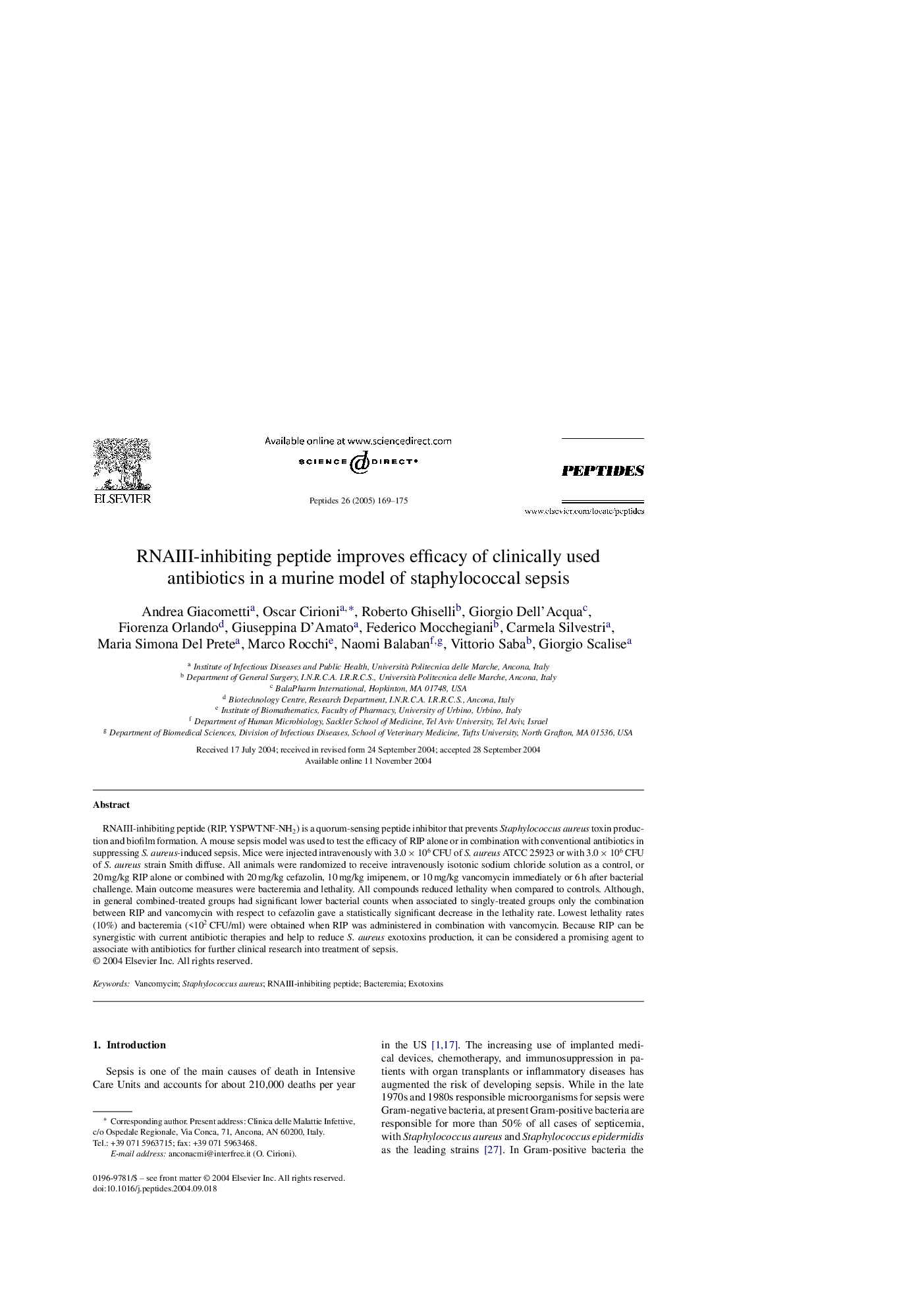| Article ID | Journal | Published Year | Pages | File Type |
|---|---|---|---|---|
| 10836998 | Peptides | 2005 | 7 Pages |
Abstract
RNAIII-inhibiting peptide (RIP, YSPWTNF-NH2) is a quorum-sensing peptide inhibitor that prevents Staphylococcus aureus toxin production and biofilm formation. A mouse sepsis model was used to test the efficacy of RIP alone or in combination with conventional antibiotics in suppressing S. aureus-induced sepsis. Mice were injected intravenously with 3.0Â ÃÂ 106Â CFU of S. aureus ATCC 25923 or with 3.0Â ÃÂ 106Â CFU of S. aureus strain Smith diffuse. All animals were randomized to receive intravenously isotonic sodium chloride solution as a control, or 20Â mg/kg RIP alone or combined with 20Â mg/kg cefazolin, 10Â mg/kg imipenem, or 10Â mg/kg vancomycin immediately or 6Â h after bacterial challenge. Main outcome measures were bacteremia and lethality. All compounds reduced lethality when compared to controls. Although, in general combined-treated groups had significant lower bacterial counts when associated to singly-treated groups only the combination between RIP and vancomycin with respect to cefazolin gave a statistically significant decrease in the lethality rate. Lowest lethality rates (10%) and bacteremia (<102Â CFU/ml) were obtained when RIP was administered in combination with vancomycin. Because RIP can be synergistic with current antibiotic therapies and help to reduce S. aureus exotoxins production, it can be considered a promising agent to associate with antibiotics for further clinical research into treatment of sepsis.
Related Topics
Life Sciences
Biochemistry, Genetics and Molecular Biology
Biochemistry
Authors
Andrea Giacometti, Oscar Cirioni, Roberto Ghiselli, Giorgio Dell'Acqua, Fiorenza Orlando, Giuseppina D'Amato, Federico Mocchegiani, Carmela Silvestri, Maria Simona Del Prete, Marco Rocchi, Naomi Balaban, Vittorio Saba, Giorgio Scalise,
